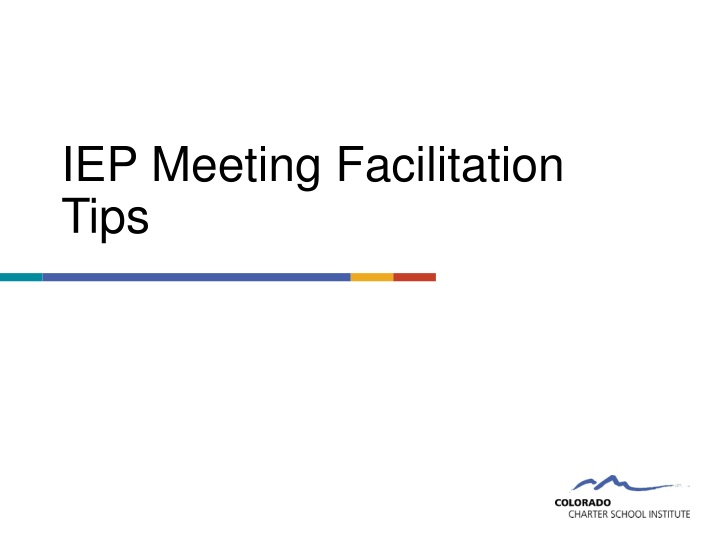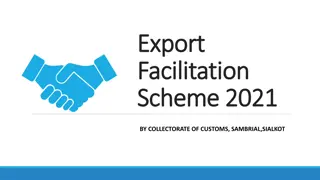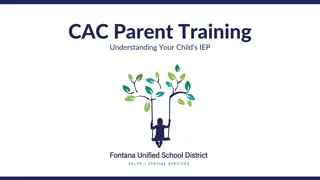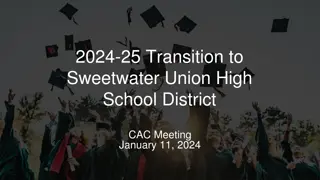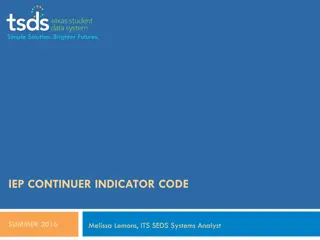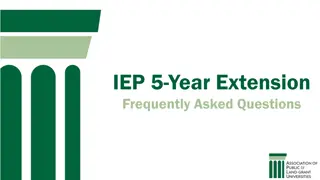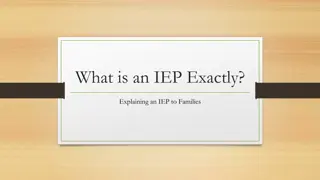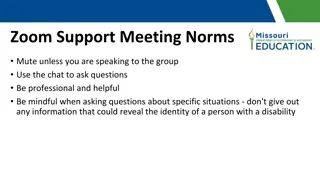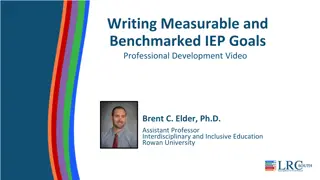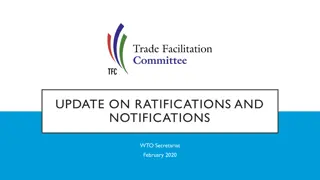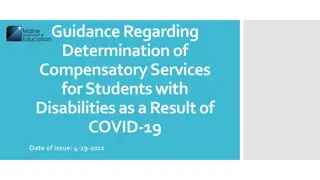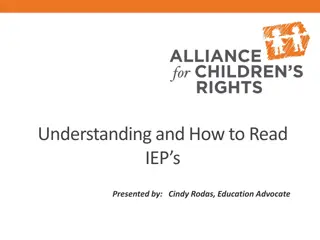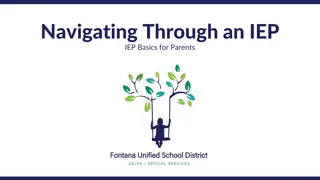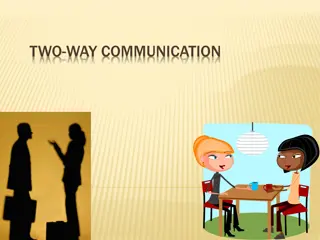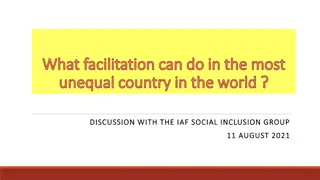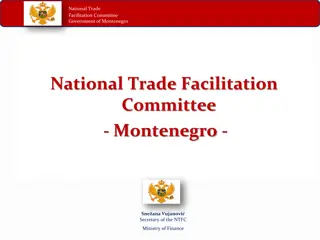IEP Meeting Facilitation Tips
In this comprehensive guide, discover valuable tips and strategies for effectively facilitating IEP meetings. From setting ground rules to delegating roles, learn how to foster a productive and inclusive environment while ensuring all participants feel heard and appreciated. Enhance your facilitation skills and optimize the meeting experience with actionable insights and best practices.
Download Presentation

Please find below an Image/Link to download the presentation.
The content on the website is provided AS IS for your information and personal use only. It may not be sold, licensed, or shared on other websites without obtaining consent from the author.If you encounter any issues during the download, it is possible that the publisher has removed the file from their server.
You are allowed to download the files provided on this website for personal or commercial use, subject to the condition that they are used lawfully. All files are the property of their respective owners.
The content on the website is provided AS IS for your information and personal use only. It may not be sold, licensed, or shared on other websites without obtaining consent from the author.
E N D
Presentation Transcript
Objectives Identify Meeting Habits Learn Facilitation Tips Practice skills Meeting Strengths Meeting Opportunities for growth Internalize individual meeting habits Learn some new tips Energize some old tips Synergize facilitation tips
IEP Meetings Mr. Jones Take notes on events and/or examples of What went right?, What went wrong?, and Be prepared to share with your neighbor.
What went right? List all events and notes that are factual What went wrong? List all events and notes that are factual What are some steps that might make it better? Take 45 seconds to jot down some examples.
Facilitation Tips Why do we need facilitation tips?
Planning Be a meeting planning expert Design a well- structured agenda Include meeting purpose Student centered Create a realistic and focused meeting goal Include parents as you make the agenda Create understanding Foster a safe environment
Set Ground Rules Establish an inclusive space Make participants feel appreciated As the facilitator, Set agenda and distribute paperwork Agendas should have time limits (flexible) Redirect participants as needed As the facilitator, Refocus negative energy Allow time for parents to share Be prepared for potential hazards Actively listening As the facilitator, Allow time for questions Take notes Summarize and move to next point Establish follow- up criteria
Delegate Roles when necessary Roles assigned to group members may be: Recording the meeting Taking notes Keeping time Parking Lot
Three Prong Approach Be Assertive Assertive; Not Scary Positive and Upbeat Actively Listen Listen with intent Read body language Use your eyes and ears Manage Conflict Look for common ground Encourage shared goals and teamwork instead of highlighting disagreements
Keep it Moving! Stay focused on the agenda Keep team focused on the goals Tackle all points within the time limits Handle the Squirrel moments
Use your tools Keep your facilitation tools handy as you navigate various situations Be flexible in your approaches Keep everyone interested and focused on the goals Avoid losing control of your meeting Pause when necessary
Be Flexible Adapt to changes Envision the end game Maintain student focused Stay Positive
Time to Practice (10 Minutes) Focus on your introduction Practice with a partner on how you open your meetings Practice the Three Prong Approach What are your key takeaways
